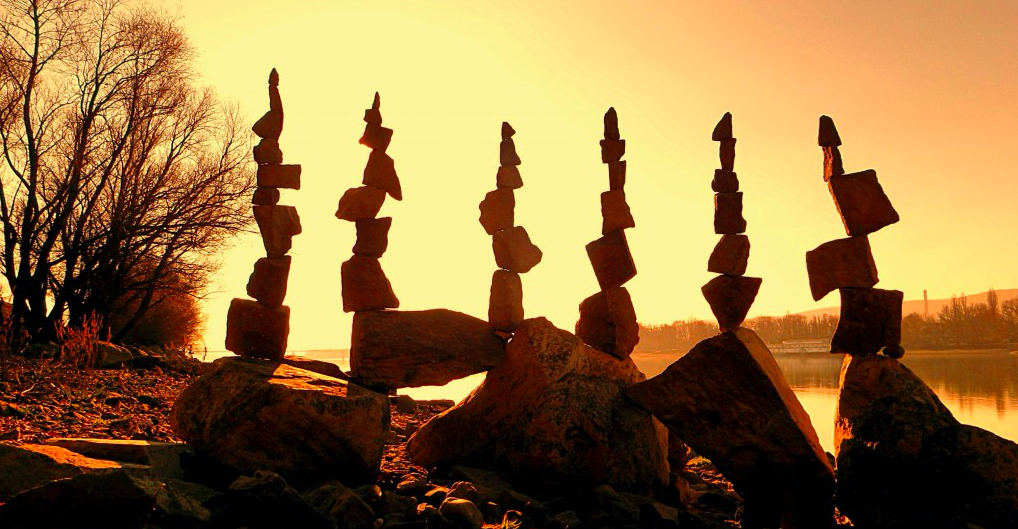“Have a look and take a photo. With time, the water washes it away, the wind blows it apart, or people destroy it, but online it can live longer in your photos.” – so said a sign placed in front of the stone garden at Római Part, before the whole area was cleared out by the raging river. Many people mourned the disappearance of this splendid sight, but thankfully the artist, Tamás Kánya – a goldsmith by profession – still keeps creating superb stone sculptures there, while also sharing photos of them online.

Tamás has been making sculptures for years, but he does not quite remember why he started creating artwork on the shore. The only thing that changed with time is that now he takes his creations apart himself after having them photographed. His photos can be seen here.

“The hardest part is not the construction, but rather finding the perfect pieces that will make up a great sculpture. I decided to take apart my artworks myself, because this way I can keep some of the pieces and later use them again for another sculpture,” says Tamás.

This artform is called land art, meaning that the artist only uses materials made by nature, and sets the pieces amid the environment where their components were collected. This movement started out in America in the ’60s, as a protest by artists against materialistic and often expensive forms of art. Most of these artworks are made in secrecy, in order to leave it to nature to gradually take its pieces back, rather than letting people destroy the sculptures.

Destruction was a problem at Római Part, especially due to parents letting their children roam around the sculptures as though they were on a playground. “Children caused the biggest damage, which is of course not their fault, but the fault of their parents, who did not tell them to be more careful,” says Tamás.
“Adults mostly took the sculptures apart to see that the pieces were not glued together.”

The disappearance of the sculptures is not an issue, as the point of this type of inherently temporary expression is that it’s written on water; in some countries, land art is considered a relaxation-boosting exercise.

At the moment, we don’t know for sure when new sculptures will appear, as according to Tamás the water level is a bit too high these days, which would make his work all the more difficult. However, he definitely plans to go back to Római Part again to create new land art in the near future, and we would also like to encourage everyone to develop their artsy side by building their own natural sculptures there, and photographing them as a true memory of Budapest. Details about Tamás’s project are found on his Facebook site, and he gladly answers questions, too.




